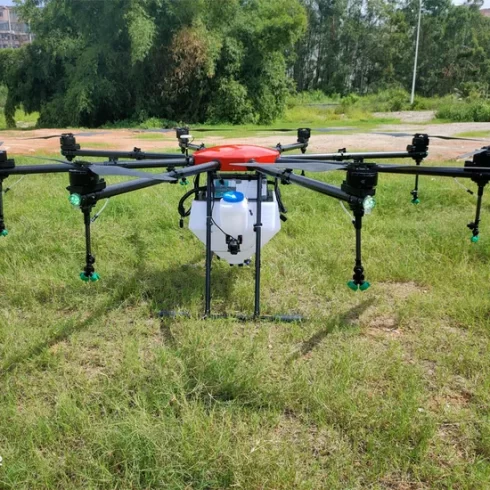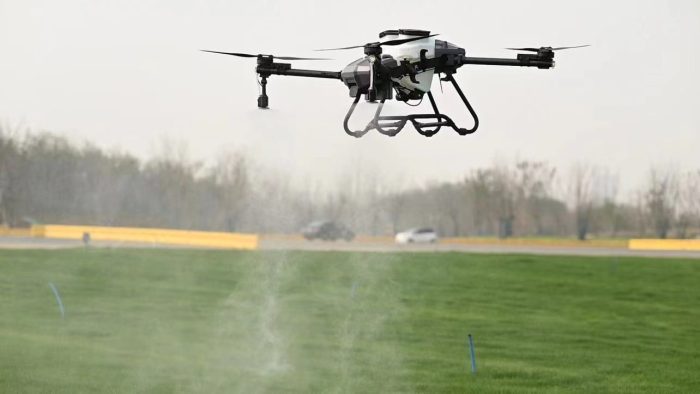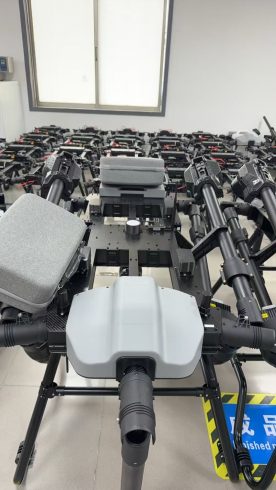![图片[1]-Drone for Crop Protection: Safeguarding Your Fields with Advanced UAVs-msoen](https://www.msoen.com/wp-content/uploads/2025/04/edbbb52c8b184639-1024x576.jpg)
Introduction
As pest pressures and plant diseases continue to threaten global food security, the drone for crop protection has become an indispensable tool for modern agriculture. Equipped with precision spraying systems, multispectral sensors, and intelligent navigation, these unmanned aerial vehicles (UAVs) help farmers detect, monitor, and treat threats quickly—minimizing damage and safeguarding yields.
What Is a Crop Protection Drone?
A crop protection drone is a specialized UAV designed to perform one or more of the following functions:
- Targeted Spraying: Applying pesticides, fungicides, or biocontrol agents exactly where needed.
- Disease & Pest Detection: Using multispectral or thermal cameras to identify early signs of stress.
- Data‐Driven Mapping: Generating prescription maps for variable‐rate treatments.
- Post‐Treatment Monitoring: Verifying treatment efficacy through follow‐up flights.
Key Features
- Precision Spraying System
- Fine-tuned nozzles deliver droplets in the 100–300 µm range to maximize coverage and minimize drift.
- Flow-control pumps ensure consistent application rates even at low heights.
- Advanced Sensors
- Multispectral cameras capture visible and near-infrared bands, enabling NDVI analysis for stress detection.
- Thermal imaging highlights temperature anomalies caused by disease or pest infestations.
- GPS/RTK Navigation
- Preprogrammed flight paths follow field boundaries with centimeter-level accuracy.
- Geo-fencing prevents accidental flights beyond designated zones.
- Autonomous Flight Modes
- One‐click mission planning in dedicated software reduces operator workload.
- Automatic return-to-home on low battery or signal loss.
- Robust Design
- Weather-resistant airframe and IP-rated electronics for operation in rain or dust.
- Quick-swap batteries and modular tanks for minimal downtime.
Benefits of Using Drones for Crop Protection
- Early Detection & Rapid Response
Identify hotspots of infestation or disease before they spread, then apply treatment within hours. - Reduced Chemical Usage
Targeted spraying lowers pesticide volumes by up to 50%, cutting costs and environmental impact. - Improved Worker Safety
Keeps farm personnel away from hazardous chemicals and challenging terrain. - Data‐Driven Decisions
High‐resolution maps enable precise application, helping to track treatment effectiveness over time. - Scalability
Easily add more drones to your fleet as your acreage grows, with consistent performance across all units.
Common Applications
| Application | Description |
|---|---|
| Fungicide Application | Control fungal diseases in humid or wet climates. |
| Insecticide Spraying | Target locusts, aphids, and other movable pests. |
| Biocontrol Release | Disperse beneficial insects or microbial agents. |
| Herbicide Spot Treatment | Eliminate weeds without harming the main crop. |
| Seed Treatment | Coat seeds with protective agents before planting. |
How to Choose the Right Crop Protection Drone
- Define Treatment Needs
- Estimate required tank volume based on acreage and spray frequency.
- Assess Sensor Requirements
- For early stress detection, prioritize multispectral or thermal payloads.
- Evaluate Flight Performance
- Minimum 20 minutes flight time per battery for efficient coverage.
- Check Regulatory Compliance
- Ensure the drone model meets local agricultural aviation standards.
- Support & Training
- Opt for suppliers offering pilot training, maintenance, and software updates.
Best Practices for Effective Crop Protection
- Pre‐Flight Field Survey
Walk the field to note obstacles and verify map accuracy. - Weather Monitoring
Operate in wind speeds under 5 m/s and avoid midday heat to reduce drift. - Calibration & Testing
Perform nozzle flow tests and sensor calibrations before each mission. - Follow‐Up Flights
Conduct post‐treatment flights to confirm target areas received adequate coverage.
Future Trends
- AI‐Enhanced Pest Identification
On‐board machine learning models that automatically recognize specific pests or diseases. - Swarm Operations
Coordinated fleets treating large tracts simultaneously for maximum efficiency. - Biodegradable Carriers
Use of eco‐friendly spray carriers to further reduce environmental footprint. - Integrated Farm Platforms
Seamless connection between crop protection drones, ground machinery, and farm management systems.
Conclusion
A drone for crop protection offers a powerful combination of precision, speed, and data intelligence—allowing farmers to respond proactively to biotic threats and optimize plant health. By selecting the right UAV platform, adhering to best practices, and leveraging emerging technologies, growers can enhance yields, reduce inputs, and contribute to sustainable agriculture.










暂无评论内容